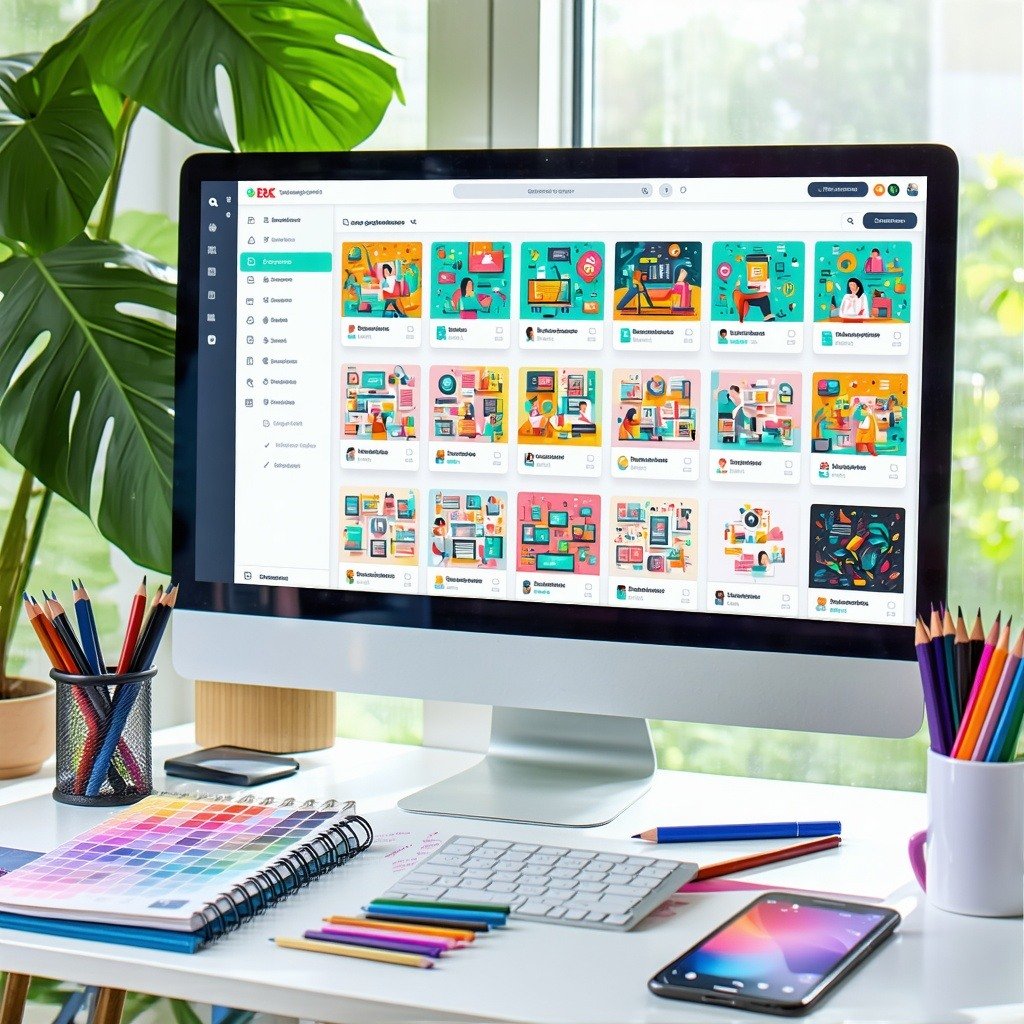You've probably heard that print is dead. But is it really, truly dead? Not at all.
True, it may not be the best idea to quit your job as a brand manager to start a newspaper company. Print advertising revenue has decreased by about 68% since 2003, with media companies shifting their focus to digital advertising as the new "bread and butter." In 2003, print advertising revenue for newspapers in the U.S. was around $46 billion. By 2023, this figure had further declined, with print advertising spending expected to decrease by an additional 7.1% in 2023 alone (Editor and Publisher).
However, print marketing is a different story, especially when it comes to the value of printed materials for marketing on a local level. In fact, for distributed brands in countless industries print is still important, and potentially even vital.
There is no indication that franchised retail stores will move away from printed pricing displays, aisle signs, or end caps. Restaurants are beginning to integrate digital menu boards, but it's a slow process, and digital signage rarely replaces an in-hand menu altogether. Similarly, rack cards, key card holders, and do-not-disturb signs aren't going anywhere in the hospitality industry.
It's hard to argue with the fact that marketing has evolved. Your brand does need a digital presence, and the ideal marketing mix for your local brand is probably different than it was a decade ago. But, if you're still convinced that print is dead, consider the following the statistics:
- 84% of marketers believe direct mail enhances multichannel campaign performance, highlighting its role in a balanced marketing strategy (PostGrid).
- 91% of promotional mail is read and opened, demonstrating its impact and reach (Postalytics).
- 73% of marketers assert that direct mail has either grown more crucial or maintained its importance over the past year (PostGrid).
- 92% of millennials have made purchasing decisions influenced by direct mail, showcasing its power even among younger consumers (Data Axle USA).
- 75% of people remember receiving a direct mail piece, emphasizing its memorability (Data Axle USA).
- 66% of Gen Y and 57% of Gen Z respondents are excited to receive direct mail, underlining its appeal across generations (Data Axle USA).
So, Print Advertising Works. But WHY?
Print advertising still has an impact on consumers of all ages. In fact, researchers have found that even digitally-savvy millennials are susceptible to the power of print - 23% of millennials can connect a purchase they've made in the last 12 months to a direct mail campaign. Despite the fact that today's consumers are spending hours connected to their smartphones and other devices, why does print still work?
The answer could lie in neuroscience. A study at Temple University found that printed materials were more likely to have an impact on the ventral striatum area of the brain. Researchers monitored brain activity imaging performed on consumers as they interacted with both digital and printed brand messaging. Since printed materials can be physically held, the brain is more likely to form lasting memories – creating an emotional response to a brand and the messaging.
Print Builds Real Connections with Customers
For many distributed brands, print is a mechanism to build lasting emotional connections with customers. In storefronts, print signage invites a direct response from the community and in-store customers, while reinforcing branding. In the local community, a menu placed on a consumer's home mailbox, or an advertisement on public transportation, may grab their attention, without a feeling of being "beaten over the head" with aggressive marketing messages.
Marketing that demands anything from the customer is ineffective. Despite the fact that people are spending loads of time online, it is important for brand managers to realize that print will probably always play an important role in location-based advertising. At the location-based level, digital marketing may always be secondary to traditional branding and advertising mechanisms.
Most likely, the right "mix" of print and digital to drive local marketing results varies between distributed brands. However, to help you understand how some highly-effective brand managers are striking the right balance, we've curated a list of three distributed brand case studies on digital and print marketing methods, as well as some recommendations on how to best help your local teams find the right balance.
1. Domino's Pizza
The ongoing "pizza wars" between Domino's and other international delivery franchises is notoriously cut-throat. To compete for customer loyalty, Domino's employs a mix of digital and print ads to create a cutting-edge customer experience. This includes a recently-announced app with "zero click" ordering, allowing loyal customers to order a saved favorite simply by opening the app.
Despite this heavy investment in a digital experience, Domino's definitely isn't backing off on print ads - at least not at the local level. Their marketing mix includes heavy direct mail to consumers, with a goal of getting specials to every door served by their local franchisees. Other, more innovative print campaigns have included a drastically-redesigned pizza box in the U.K. (that quite literally looks like a pair of dominoes).
Creative director Sean Thomas states that the brand achieved a box "design [that] makes an instant impact on the doorstep and means that consumers aren't just ordering a pizza, they are ordering a Domino's."
For other local brands with similarly intense competition, print can be a powerful way to differentiate your product in your customer's memory.
2. Anytime Fitness
For distributed fitness brands like Anytime Fitness, it can be challenging to build loyalty in certain geographic regions, especially when convenient, 24-hour access offerings are abundant for health-conscious locals. Anytime Fitness gets plenty of press for their multi-channel approach to some pretty bold campaigns. Back in 2014, the brand targeted customers who historically felt alienated by gym advertising with their "get to a healthier place" ads that focused on "normal" people on television, digital, and print outlets.
More recently, the brand got a little controversial press for a "F*#? Unfit!” campaign that was used to embolden consumers with in-gym advertising, outdoor print ads, and digital distribution.
For hyper-local marketing, outdoor advertising still works. Research cites several benefits of using billboards, public transportation, and other outdoor signage; including, brand awareness and excitement around specific campaigns.
3. GNC
Despite the fact that GNC is the largest franchised brand in the health and wellness space, the retailer is facing some fierce competition from online retailers and pharmacies. They've recently undergone a massive pivot and pricing restructure in response to customer feedback, including the removal of the annual fee for their membership program.
The "One New GNC" rebranding campaign encompassed a mix of marketing methods - including a large amount of in-store signage to reiterate the brand's new direction to customers. The company's plan for the next few quarters involves many television ads. Yet, print mailings, outdoor signage, and in-store campaigns have traditionally been their dominant methods for connecting with a "very loyal" customer base of health enthusiasts.
How Brand Managers Can Get the Print Balance Right
For brand management teams, digital asset management (DAM) tools that support both digital and traditional marketing execution are a necessity to support local marketing execution. If you're using a tool that only supports digital asset creation, for web content management or social media assets, you're missing out on an opportunity to boost engagement with local communities.
For some brands, rolling out print assets first, in a local marketing automation tool like CampaignDrive, can be the right way to get local marketing representatives to adopt the tool. By providing static assets for in-location branding first, locals learn the basic workflows. The next step might be creating customizable templates for print ads and flyers, followed by digital options for things like email templates.
Ultimately, your local marketers aren't focused on print advertising because they're old-fashioned or resistant to change. In most distributed marketing cases, print is a beloved tool because it really works. For brand management teams, the challenge is to strike a balance between digital and traditional executions. With an all-in-one tool like CampaignDrive, you can enable success for every marketing execution, from outdoor signage to digital ads.
To learn how highly effective distributed brands like The Marriott are balancing print and digital options within a single DAM tool for local marketers, check out our free eBook Distributed Marketing on Steroids: The Brand Manager’s Guide to Designing and Managing Local Marketing Assets Without Breaking a Sweat. 





